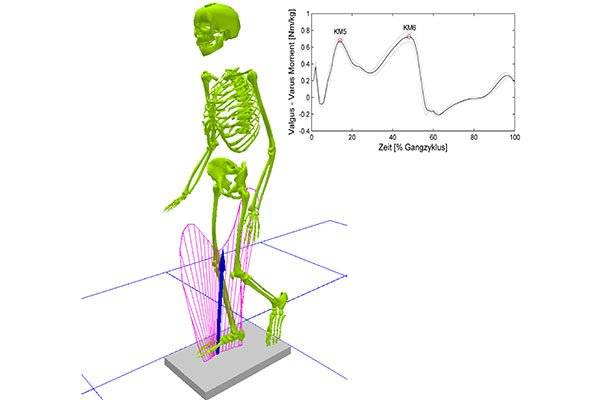The aim of the Children’s KNEEs Study is to analyze altered biomechanical movement strategies in obese children during walking and stair climbing and to develop a specific training program for them.

Introduction
Obesity is a major risk factor for the development of varus/valgus deformities of the knee joint in children. Malalignment in the knee joint combined with increased excess mass, as present in obese children, can result in increased joint stress and damage to articular cartilage. Studies indicate that overweight children encounter a serious risk of either developing unfavorable gait patterns to minimize or maintain joint loadings during walking and have an increased risk for greater hip and knee joint loadings during locomotion. These kinematic and kinetic alterations may lead to an increased risk of developing osteoarthritis over time. Hence, preventing these kinematic or kinetic alterations in obese children might be a possibility to reduce the risk of developing osteoarthritis in adulthood. Recently it was shown, that a lower-extremity strengthening program could decrease frontal plane moments during walking in adults with knee osteoarthritis.
Aims
However, to our knowledge there exist no studies examining the preventive effect of those interventions in reducing joint loads in obese children. Therefore, the aims of this study are to examine if a training program for obese children including strength and neuromuscular exercises can positively affect lower-extremity joint loads during walking and stair climbing. Further we want to determine if this program can positively change knee related ratings in well-being, pain and joint function.
Methods
A total of 48 obese boys and girls aged between 10 and 18 years with a body mass index exceeding the 97th percentile will be recruited for this study and randomly assigned to an intervention and control group. Participants of the intervention group will undergo a 12 week neuromuscular and quadriceps/hip strengthening program. 3D gait analysis during level walking and stair climbing will be performed at baseline and follow-up. Repeated measures analysis of covariance will be used to compare both groups in biomechanical and clinical outcome parameters.
Publications
- Univ.-Prof. Dr. Stefan Nehrer: Zentrum für Regenerative Medizin und Orthopädie, Donau Universität Krems
- Univ.-Prof. Dr. Susanne Greber-Platzer: Univ. Klinik für Kinder- und Jugendheilkunde, AKH Wien
- Univ.-Prof. Dr. Arnold Baca: Abteilung Biomechanik, Bewegungswissenschaft und Sportinformatik, Institut für Sportwissenschaft, Universität Wien
